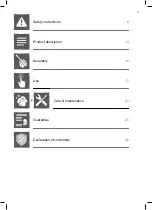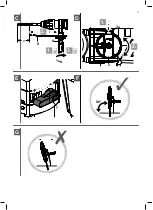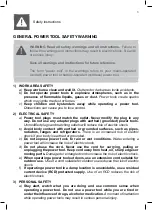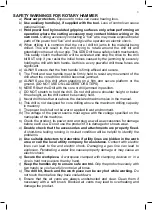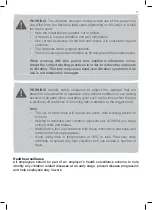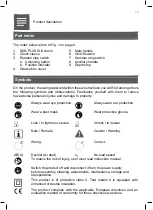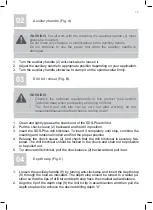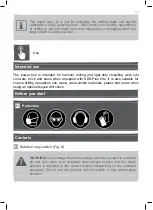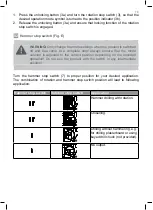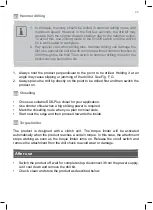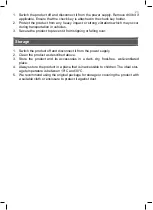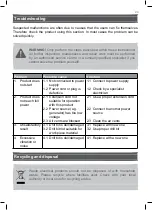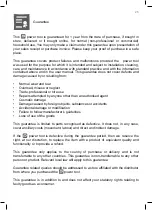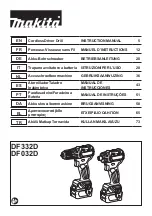
WARNING! Some dust particles created by power sanding, sawing,
grinding, drill and other construction jobs contain chemicals known
to cause cancer, birth defects or other reproductive harm.
Some
examples of these chemicals are:
• Lead from lead-based paints.
• Crystalline silica from bricks and cement and other masonry products.
• Arsenic and chromium from chemically treated timber.
Your risk from these exposures varies, depending upon how often you do
this type of work. To reduce your exposure to these dusts:
• Work in a well-ventilated.
• Work with approved protective equipment, such as those dust masks
that are specially designed to filter microscopic particles.
VIBRATION
The European Physical Agents (Vibration) Directive has been brought in to help reduce
hand arm vibration syndrome injuries to power tool users. The directive requires power
tool manufacturers and suppliers to provide indicative vibration test results to enable
users to make informed decisions as to the period of time a power tool can be used
safely on a daily basis and the choice of tool.
SEE TECHNICAL SPECIFICATIONS IN THE INSTRUCTION MANUAL FOR THE
VIBRATION LEVELS OF YOUR TOOL.
The declared vibration emission value should be used as a minimum level and should
be used with the current guidance on vibration.
Calculating the actual period of use can be difficult and the HSE website has further
information.
The declared vibration total value has been measured in accordance withEN 60745-1
and EN 60745-2-6 and may be used for compare one tool with another.
The declared vibration total value may also be used in a preliminary assessment of
exposure.
10


